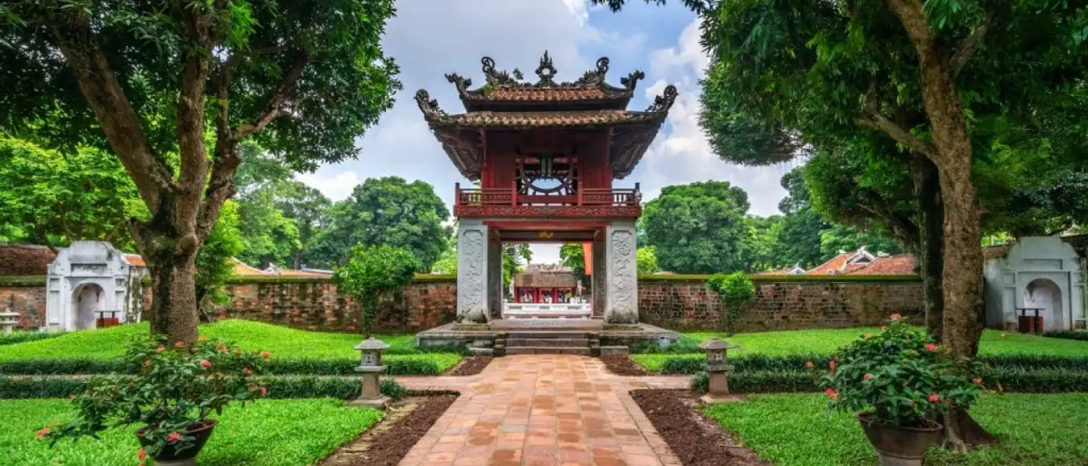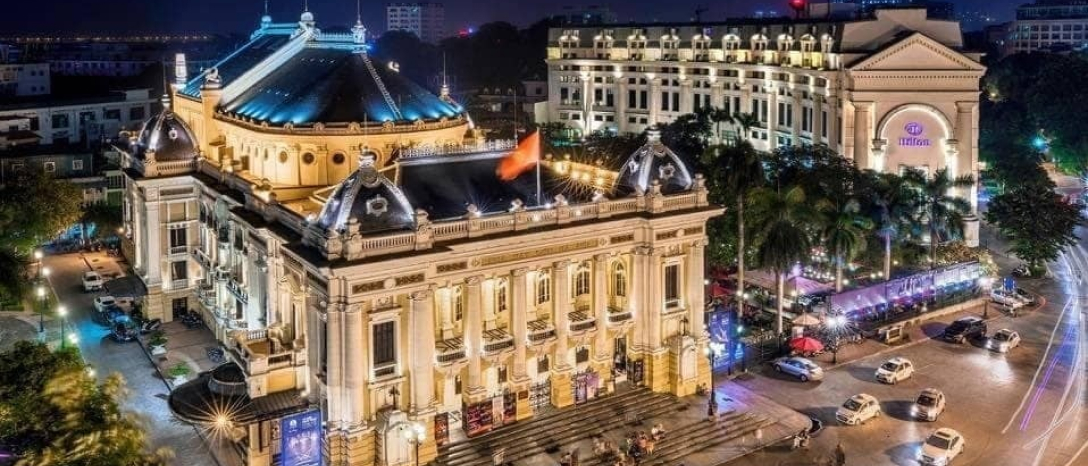Hoan Kiem Lake and Ngoc Son Temple
Hoan Kiem Lake: Located in the heart of Hanoi, Hoan Kiem Lake is not only a perfect place to relax but also holds many historical stories and legends. The name "Hoan Kiem" is associated with the legend of King Le Loi and the magical sword returned by a golden turtle. The lake is surrounded by ancient trees and historic structures like Turtle Tower, creating a peaceful scene in the middle of the bustling capital.
Ngoc Son Temple: Situated on a small island in the lake, Ngoc Son Temple is dedicated to cultural deities, including Van Xuong De Quan and Tran Hung Dao. The temple is connected to the shore by the bright red Huc Bridge, symbolizing longevity and peace. It attracts many visitors who come to offer incense and learn about Vietnam's history and culture.

Temple of Literature - Quoc Tu Giam
Temple of Literature: Built in 1070 during the reign of King Ly Thanh Tong, the Temple of
Literature is dedicated to Confucius and scholars of Confucianism. It is a symbol of
knowledge and education, featuring traditional architecture, including the main gate, Khue
Van Pavilion, and stelae of doctors. The stone stelae inscribed with the names of those who
passed the imperial examinations are valuable heritage, reflecting the Vietnamese tradition
of valuing education.
Imperial Academy: As Vietnam's first university, established in 1076, it was where many
talented scholars were trained. The Imperial Academy was not only a place of learning but
also a center for preserving and transmitting Confucian knowledge through the ages.

Hanoi Old Quarter
Old Quarter: Hanoi’s Old Quarter, also known as "Hanoi 36 streets," is a historic area with
unique architecture. Each street in this area is traditionally associated with a specific
craft or trade, such as Hang Dao (selling silk), Hang Ma (selling votive papers),
and Hang Bac (selling jewelry). Visitors can explore the narrow streets,
discover ancient houses, enjoy street food, and shop for traditional handicrafts.
Cuisine: The Old Quarter is a food lover’s paradise, offering iconic dishes like pho,
bun cha, cha ca La Vong, and various street foods. It’s the perfect place to experience
the authentic flavors of old Hanoi.

Ho Chi Minh Mausoleum
Ho Chi Minh Mausoleum: Inaugurated in 1975, the mausoleum is the final resting
place of President Ho Chi Minh. This structure not only honors a great leader
but also serves as a sacred site, attracting millions of visitors each year.
Inside the mausoleum, Ho Chi Minh's body is preserved under special conditions,
allowing people to pay their respects.
Presidential Palace Historical Site: In addition to the mausoleum, this area
includes the Presidential Palace, Ho Chi Minh’s stilt house, where he lived
and worked, along with a fish pond and gardens he tended. It offers visitors
insight into the simple life of President Ho Chi Minh.

Hanoi Opera House
Architecture: The Hanoi Opera House was built in the early 20th century
in a classical French architectural style, modeled after the Opéra Garnier
in Paris. With its spacious area and intricately detailed interior, the
Opera House is one of Hanoi’s most impressive architectural landmarks.
Artistic Activities: The Opera House hosts many important cultural events,
including concerts, operas, ballets, and traditional cultural performances.
Visiting the Hanoi Opera House not only offers a glimpse into the city’s
art and culture but also provides an opportunity to enjoy exceptional performances.
